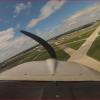-
Posts
10 -
Joined
-
Last visited

rrbeck11 replied to txmooney201's topic in Modern Mooney Discussion

rrbeck11 replied to txmooney201's topic in Modern Mooney Discussion

rrbeck11 replied to Toothdok50's topic in Vintage Mooneys (pre-J models)

rrbeck11 replied to txmooney201's topic in Modern Mooney Discussion

rrbeck11 replied to txmooney201's topic in Modern Mooney Discussion
Hello, did you end up doing the conversion on your engine swap? I’m at that point looking for feedback
Dan -
Thanks for the great post on A3B6 conversion. Not sure what I will do at this point, but appreciate the info. Two questions; Can you tell me what the total cost to convert was and 2) Would you do it the same way if you had to do it over (i.e. go with the A3B6 vs. the A3B6D?)
We have placed cookies on your device to help make this website better. You can adjust your cookie settings, otherwise we'll assume you're okay to continue.